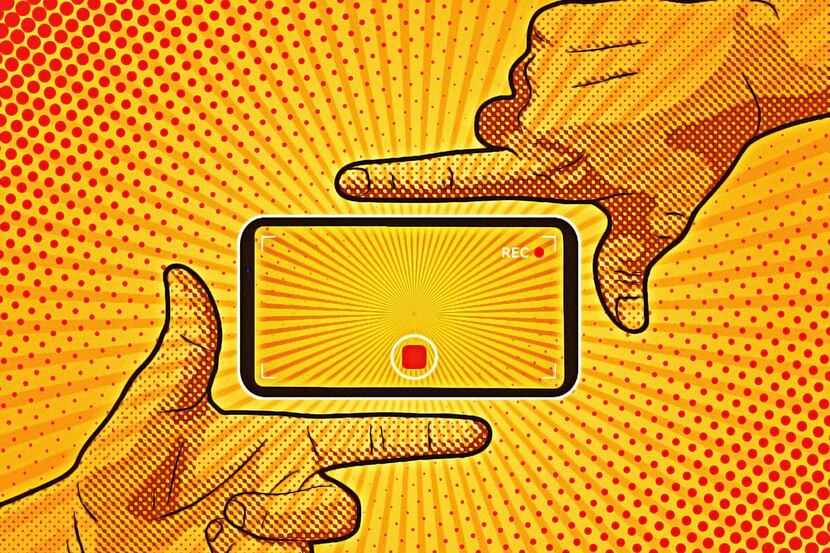Someday, this will all be over, and we will all return to our normal lives. We will be able to visit family and friends, to go out to eat, to shop, to return to work. And when we do, this will be a time we will want to forget. And I suspect we will do a pretty good job of it, too, because as humans we are adept at sweeping unpleasantness under our collective carpet, suppressing those events that are emotionally and intellectually painful.
But as unpleasant as it is, quarantine has already become a significant part of our history, and a part that, eventually, we will want to remember. We will have to explain to our children and grandchildren what life was like during the plague of Coronavirus, and we will have to remind ourselves, as well, for memory is fleeting.
I’ve been teaching a class this semester on architecture and film — a subject that has become all the more relevant as screens have become our principal means of connection and our seminar meetings have moved online. In adapting to our new normal, the class has undertaken the project of documenting their lives under quarantine on video. It’s been, I think, a good learning experience for them as filmmakers, but also therapeutic in helping them to digest this moment, because the process of filmmaking requires a modicum of intellectual and emotional perspective.
It’s a project that’s suitable for adults and also for adolescents — it’s something a bit more intensive than Instagram and TikTok. The good news is that film has become the most democratic of mediums. Just about everyone has a movie camera in their pocket, in their mobile phone.
With that in mind, here are some thematic and technical suggestions to help make a “viral” video that will stand the test of time.
Subject matter
Format and style: There are many options; choose whichever makes you comfortable. You can narrate or set a montage of your experience to music. You can make a video diary in which you report on the activities of the day from a set location. You can move around to different locations, showing the spaces you inhabit and the activities associated with them. “Be aware and accentuate your environment,” says Bart Weiss, the director of Dallas VideoFest and a professor of film at the University of Texas at Arlington.
Audience: Remember that your video will be seen in the future, perhaps a long time in the future, by a friend or family member who may not have experienced this time. You will also be different in the future. Some references that seem natural to you now will be long forgotten. So be sure to set up the situation clearly, explaining the current predicament, and be a considerate narrator as you proceed.
Detail: Sitting in front of a desk and just saying what you did during the day, broadly, might be interesting once, but if repeated ad nauseam, your future self might become bored. Yes, being under quarantine can be boring, but you want to express that boredom without making a boring film. To do that focus on details, not generalizations. Try to find the unique things about living under quarantine that are different or that characterize these times, and document them: Zoom meetings; endless dishes because we’re all eating at home; obsessive hand washing. Taking notes during the day may help you remember these items.
Cinematography
Shoot horizontally: You’re probably accustomed to taking pictures and doing Facetime calls with your camera held vertically, as if for a portrait. But for shooting video, you want to have the camera in landscape (horizontal) position, as this approximates the aspect ratio of a desktop or wall-mounted screen, and it’s how we’re used to watching film and television.
Setting: Think about your background, especially if you’re shooting yourself in a diary style, or if you’re shooting anyone else looking into the camera. Avoid shooting in front of windows or lights, as they will put the person into silhouette, or force the background to white-out as the camera compensates and tries to light the subject. For shooting indoors, it’s best to avoid light from windows wherever possible, because the quality of incoming light shifts constantly, and is of different temperature (color) than the illumination from bulbs. “Light your face differently than you light your background,” says Weiss. “If you bounce a light off a white board or something that diffuses it, the light that hits your face will be a bit softer.”
Wardrobe: Think about what you’re wearing. Does the color stand out from the background? Are you sloppy or sharp? Avoid distracting patterns. Be yourself, but neater.
Hold it steady: Keep the camera as steady as possible. If you can, it’s best to find a stable place to set it down so it’s not handheld. Attaching the camera (via tape or clips) to a desk chair that swivels and has wheels will allow you to do smooth tracking shots and pans to the left and right. If you’re doing a video diary, you can use the camera on your computer, because it is stable. “If you do move the camera, move it slowly,” says Weiss.t “Move purposefully, don’t wander around.” Always make sure your subject is in focus.
Sound: Controlling the sound on video is extremely challenging. A good tip is to use the microphone in your headphones, if you can find a way to place it so it is not visible, or barely visible. This is especially useful if you are outside, where wind and street noise are a problem. Background noise you generally don’t notice becomes problematic when shooting video. It may be uncomfortable for the short time you are filming, but it’s best to shut windows and turn off all heating and air conditioning systems. If you have a fan running, even a ceiling fan, turn it off. (Never shoot a running fan: they spin at a rate that is incompatible with the speed of your video.)
Editing: There are many options for video editing; some applications are native to your camera, others that you can either download for free or purchase. Whatever platform you choose, the basics remain the same. Try to avoid effects like wipes, starbursts, and other trippy options that call attention to themselves. You want attention on your film, not hokey imported features. “You’re not making a used car commercial,” says Weiss. Stick to standard cuts and the occasional dissolve or fade to express passing of time. Remember to begin your film with a title. Again, simple use of typography is recommended. If you’re using music, keep it in the background. Is your music choice taking away focus from what you’re shooting? If so, that’s a problem. Using copyrighted music without permission is illegal, and social sites will likely take your video down if you post it.
Watch
The best way to learn is to watch. Documentary filmmakers with unique visual styles include Jem Cohen, Albert and David Maysles, and Errol Morris. S.R. Bindler’s wonderful Hands on a Hard Body, filmed in Texas, shows that you can be spatially constrained — to a pickup truck — and still produce a cinematic masterpiece.
Good luck!
See what else we’re building. Find more architecture stories here.
Find the latest news on Coronavirus from The Dallas Morning News here.

